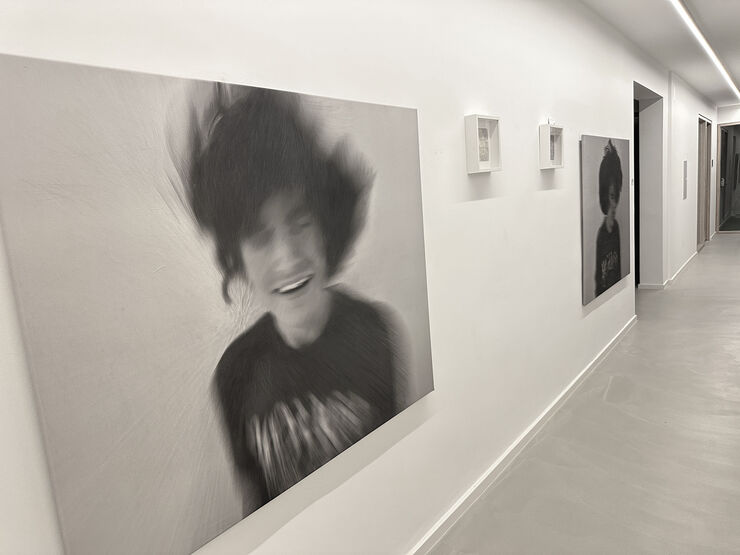
More on the subject Interviews

»With the camera, I can lend permanence to the ephemeral«
Bringing time to a standstill with photography: Berlin-based photographer Elitza Nanova not only captures the dynamics of dance, but also her fascination with fleeting moments for eternity. In an in-depth conversation, she provides deep insights into her practice. The interview was conducted by Mario Stumpfe.

New fine art print by Eveline Stauffer
With her minimalist paintings, the artist Eveline Stauffer succeeds in capturing the expressive power of maximally reduced forms. We interviewed the artist on the occasion of the publication of her new limited edition fine art print of the work Light blue light in the south.
Dive deeper into the art world
How underrepresented are women in the arts really?
It's hard to deny that the gender pay gap exists - and it doesn't stop at the art industry. Despite the widespread opinion that women are actually relatively common in the creative scene, there is, as is so often the case, an imbalance in favor of men. But is this really only reflected in the fees paid? Figures, data and facts clearly reveal how differently the genders are represented, but what is often missing are insights into the causes and, above all, solutions.
Golden times: The Fuggers as patrons of the arts
On the 500th anniversary of Jakob Fugger's death on December 30, the Schaezlerpalais is commemorating him as a patron of the arts: the wealthy merchant family commissioned numerous artists of their time. The exhibition Art’s Rich Heritage: Jakob Fugger and his Legacy runs until April 12, 2026, in Augsburg.













